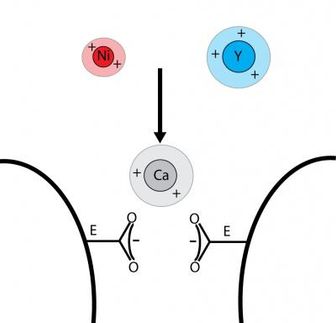Chili Pepper ingredient facilitates - new pain management method
Advertisement
Imagine an epidural or a shot of Novocain that doesn't paralyze your legs or make you numb, yet totally blocks your pain. This type of pain management is now within reach. As a result, childbirth, surgery and trips to the dentist might be less traumatic in the future, thanks to researchers at Massachusetts General Hospital (MGH) and Harvard Medical School, who have succeeded in selectively blocking pain-sensing neurons in rats without interfering with other types of neurons.
The pint-sized subjects received injections near their sciatic nerves, which run down their hind limbs, and subsequently lost the ability to feel pain in their paws. But they continued to move normally and react to touch. The injections contained QX-314, a normally inactive derivative of the local anesthetic lidocaine, and capsaicin, the active ingredient in hot peppers. In combination, these chemicals targeted only pain-sensing neurons, preventing them from sending signals to the brain.
"We've introduced a local anesthetic selectively into specific populations of neurons," explains Harvard Medical School Professor Bruce Bean, an author on the paper, which appears in Nature on Oct. 4. "Now we can block the activity of pain-sensing neurons without disrupting other kinds of neurons that control movements or non-painful sensations."
"We're optimistic that this method will eventually be applied to humans and change our experience during procedures ranging from knee surgery to tooth extractions," adds Professor Clifford Woolf of Massachusetts General Hospital, who is senior author on the study.
Despite enormous investments by industry, surgical pain management has changed little since the first successful demonstration of ether general anesthesia at MGH in 1846. General and local anesthetics work by interfering with the excitability of all neurons, not just pain-sensing ones. Thus, these drugs produce dramatic side effects, such as loss of consciousness in the case of general anesthetics or temporary paralysis for local anesthetics.
"We're offering a targeted approach to pain management that avoids these problems," says Woolf.
The new work builds on research done since the 1970's showing how electrical signaling in the nervous system depends on the properties of ion channels, that is, proteins that make pores in the membranes of neurons.
"This project is a perfect illustration of how research trying to understand very basic biological principles can have practical applications," says Bean.
The new method exploits a membrane-spanning protein called TRPV1, which is unique to pain-sensing neurons. TRPV1 forms a large channel, where molecules can enter and exit the cell. But a "gate" typically blocks this opening. The gate opens when cells are exposed to heat or the chili-pepper ingredient capsaicin. Thus, bathing pain-sensing neurons in capsaicin leaves these channels open, but non-pain sensing neurons are unaffected because they do not possess TRPV1.
The new method then takes advantage of a special property of the lidocaine derivative QX-314. Unlike most local anesthetics, QX-314 can't penetrate cell membranes to block the excitability of the cell, so it typically lingers outside neurons where it can't affect them. For this reason it is not used clinically.
When pain-sensing neurons are exposed to capsaicin, however, and the gates guarding the TRPV1 channels disappear, QX-314 can enter the cells and shut them down. But the drug remains outside other types of neurons that do not contain these channels. As a result, these cells fully retain their ability to send and receive signals.
The team first tested their method in the Petri dish. Alexander Binshtok, a postdoctoral researcher in Woolf's lab, applied capsaicin and QX-314 (separately and in combination) to isolated pain-sensing and other neurons and measured their responses. Indeed, the combination of capsaicin and QX-314 selectively blocked the excitability of pain-sensing neurons, leaving the others unaffected.
Next, Binshtok injected these chemicals into the paws of rats and measured their ability to sense pain by placing them on an uncomfortable heat source. The critters tolerated much more heat than usual. He then injected the chemicals near the sciatic nerve of the animals and pricked their paws with stiff nylon probes. The animals ignored the provocation. Although the rats seemed immune to pain, they continued to move normally and respond to other stimuli, indicating that QX-314 failed to penetrate their motor neurons.
The team must overcome several hurdles before this method can be applied to humans. They must figure out how to open the TRPV1 channels without producing even a transient burning pain before QX-314 enters and blocks the neurons, and they must tinker with the formulation to prolong the effects of the drugs. Both Bean and Woolf are confident they'll succeed.
"Eventually this method could completely transform surgical and post-surgical analgesia, allowing patients to remain fully alert without experiencing pain or paralysis," says Woolf. "In fact, the possibilities seem endless. I could even imagine using this method to treat itch, as itch-sensitive neurons fall into the same group as pain-sensing ones."
Research in the Woolf lab is supported by the National Institute of Neurological Disorders and Stroke (NINDS) and the National Institute of Dental and Craniofacial Research. Research in the Bean lab is supported by NINDS and the National Institute of General Medical Sciences.
Harvard and MGH have filed patents on this technology platform.



























































